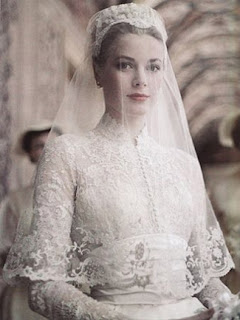A
close friend of mine has scheduled her wedding next October in Florida. She and
her fiance have not yet selected a venue, caterer, florist, theme, invitations…well,
they haven’t selected anything - we’ll just leave it at that.
During
a holiday party, however, when I asked the bride whether she was stressed (hey,
I had to know!), she said that the only thing she was worried about was
registering.
Talk
about surprising! When I married just under two years ago, the best part of the
planning process was registering for gifts. It was so much fun, and I’d be lying if
I said that I’d never thought about it before I was even engaged.
Yes,
while growing up many girls dream about their dress, shoes and flowers, but
alongside those thoughts I also
dreamed of registering. In thinking about why this was the case (and whether it
was abnormal of me to be so excited about registering), I realized that I could
attribute my excitement about registering to two of my personality traits: I love
to 1) shop and 2) make lists.
Registering
boils down to those two things: shopping and list-making.
However,
I could very easily also understand my friend’s anxiety. Choosing whether, when
and where to create a registry much less what to put on it requires planning.
Not creating a registry means establishing a completely unpredictable gift-receiving
situation; creating one that is too small or that contains too many expensive items
could reflect poorly on the couple.
Now,
back to that holiday party and the questions I answered. For ambiance, imagine a
gingerbread house, several empty bottles of wine and at least a dozen plates of
devoured appetizers.
Should
I even register? It seems outdated and our wedding will be small.
Yes.
Every couple should register. Wedding and bridal shower guests will give
presents to you, no matter how much you insist that nobody will or should bring
anything. Creating a registry is a kindness towards your guests because it
takes the guesswork out of what to get you two newlyweds to start your life
together; this is even more kind for those guests who may not be familiar with
your tastes, likes or dislikes.
My culture traditionally gives gifts of cash. Do I still need to register?
That’s
awesome - I’m Polish and cash is de rigueur at our weddings - but yes, you
still need to register. Someone you invite, who learns about your wedding or
who you might never even have thought of the entire time you were planning your
wedding will want to send you a gift that isn’t cash. Unless you want to make
it more likely that you will receive something you won’t need, like or use, you’ve
got to register.
Aren’t
people just going to buy me whatever they want anyway? Why do they need a list?
Yes,
there are always going to be people who ignore your registry. I hate that, it’s
super annoying; after all the time you spent creating a list for your guests,
it’s frustrating to receive something not on it. The exception to this is
hand-made or heirloom gifts.
Stick
to the list people, always stick to the list.
Where
should I register?
Register
at stores that are accessible either online or in-person to your guests. When
selecting your registry locations, consider the ease of purchasing and sending
a gift from the registry. That
local boutique may have the best cream-and-sugar set you’ve ever laid eyes on,
but you’re not going to receive it if a guest has to call and order it over the
phone.
What
should I register for?
Ah,
here’s the part where lists come into play. Here’s one of the best pieces of
advice (although there are lots) you’ll ever receive from HJ: make a list.
While
you’re in the midst of wedding planning, pull out a piece of paper when the
idea of registering first pops into your mind. Title it “Registry” and keep it
somewhere specific. Whenever you think “We need that”, “That would be helpful”,
“That’s an awesome gadget”, “My hubby-to-be would love that” or anything else
that’s similar. Jot it down.
Okay
readers, digest all that for the time being. Next week I’ll get into the nitty-gritty
of where to register and what to register for. You know what that means: more
list-making!
**Does
anyone besides me see the link between Santa’s “making a list” and registering?**
















.jpg)
